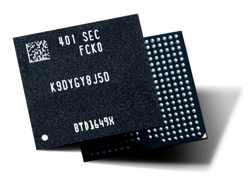Samsung Electronics Begins Mass Production of 1Tb TLC 9th-Gen V-NAND
With about 50% increase bit density compared to previous-gen, and power consumption improved by 10% with advancements in low-power design
This is a Press Release edited by StorageNewsletter.com on April 30, 2024 at 2:02 pmSamsung Electronics Co., Ltd. begun mass production for its 1Tb TLC 9th-gen vertical NAND (V-NAND), solidifying its leadership in the NAND flash market.
“We are excited to deliver the industry’s first 9th-gen V-NAND, which will bring future applications leaps forward. In order to address the evolving needs for NAND flash solutions, Samsung has pushed the boundaries in cell architecture and operational scheme for our next-generation product,” said SungHoi Hur, head, flash product and technology, memory business, Samsung. “Through our latest V-NAND, Samsung will continue to set the trend for the high-performance, high-density SSD market that meets the needs for the coming AI generation.”
With the industry’s smallest cell size and thinnest mold, Samsung improved the bit density of the 9th-gen V-NAND by about 50% compared to the 8th-gen V-NAND. New innovations such as cell interference avoidance and cell life extension have been applied to enhance product quality and reliability, while eliminating dummy channel holes has reduced the planar area of the memory cells.
In addition, the company’s ‘channel hole etching’ technology showcases the company’s leadership in process capabilities. This technology creates electron pathways by stacking mold layers and maximizes fabrication productivity as it enables simultaneous drilling of the industry’s highest cell layer count in a double-stack structure. As the number of cell layers increase, the ability to pierce through higher cell numbers becomes essential, demanding more sophisticated etching techniques.
The 9th-gen V-NAND is equipped with the next-gen NAND flash interface, ‘Toggle 5.1,’ which supports increased data input/output speeds by 33% to up to 3.2Gb/s. Along with this new interface, the company plans to solidify its position within the high-performance SSD market by expanding support for PCIe 5.0.
Power consumption has also been improved by 10% with advancements in low-power design, compared to the previous-gen. As reducing energy usage and carbon emissions become vital for customers, the firm’s 9th-gen V-NAND is expected to be an optimal solution for future applications.
The manufacturer started mass production for the 1Tb TLC 9th-gen V-NAND this month, followed by the QLC model in 2H24.














 Subscribe to our free daily newsletter
Subscribe to our free daily newsletter

